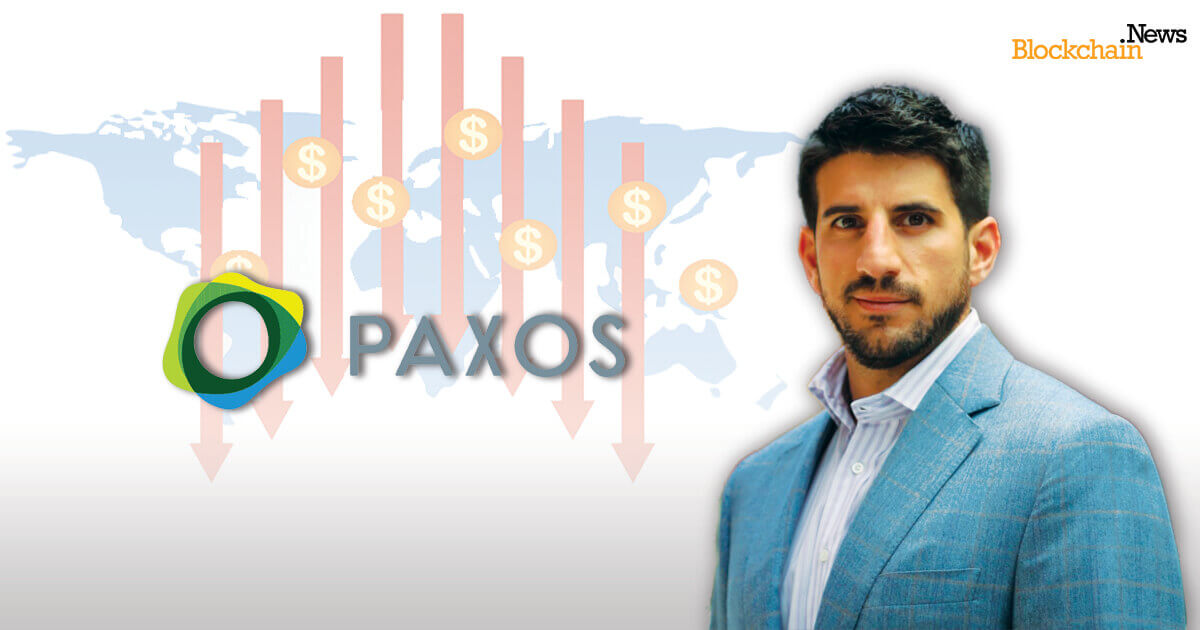Paxos—How the Global Financial Crisis Inspired the Creation of the NYDFS-Regulated Stablecoin
Charles Cascarilla is the CEO and co-founder of Paxos, a financial technology company working to modernize the financial system by digitizing and mobilizing assets. A traditional hedge fund manager and equity investor, Cascarilla was able to recognize the power of blockchain and the function it could have in revolutionizing the way trade is conducted and settled.

Charles Cascarilla is the CEO and co-founder of Paxos, a financial technology company working to modernize the financial system by digitizing and mobilizing assets. Paxos is building a future where all assets—from money to gold to securities— can be digitized and then moved instantaneously.
Before Paxos, Cascarilla co-founded institutional asset management complex Cedar Hill Capital Partners in 2005 and its venture capital subsidiary, Liberty City Ventures, in 2012. Earlier in his career, Cascarilla was a portfolio manager at Claiborne Capital and worked at both Bank of America Securities and Goldman Sachs.
Following his panel engagement at The Capital by CoinMarketCap, where he took part in a discussion on the ‘Institutional Adoption of Crypto’, he sat down with Blockchain.News to discuss the impetus behind the formation of the Paxos Trust Company, its recently launched PAX Gold regulated digital asset and the current state of the stablecoin ecosystem.
Clogged Plumbing
Cascarilla comes from a traditional hedge fund background where his main focus was investing in financial services companies and managing private equity vehicles. Investing in the whole life cycle of financial services companies gave Cascarilla a 360-understanding of the limitations of the traditional market structure and fueled his conviction that he could improve upon the system using technology.
“Prior to the Global Financial Crisis, there was a big theme happening in the ecosystem regarding how the front end of markets and execution and trading were going to change. Then when the crisis hit, we saw how the entire plumbing of the financial system really locked up and exacerbated the situation.” he explained.
Cascarilla recalls being struck by the insanity of the situation—being able to trade in microseconds and then having to wait several days to settle a trade. It became apparent that the whole system needed to be reconfigured on a fundamental level, which could lessen the market’s reliance on centralized intermediaries and ‘too-big-to-fail’ institutions. He said, “Blockchain technology looked to us as a great solution to this fundamental contradiction of really fast trading on really archaic infrastructure. Not only would it solve these problems, but it would actually create more access and ability to create new products and new intermediation, but in a completely different way, when its decentralized.” He added, “Paxos was formed with this vision of creating a financial market infrastructure for an open financial system.”
Foundation of Trust
Paxos is a Trust Company regulated by the New York State Department of Financial Services (NYDFS), which according to Cascarilla, makes it like a bank but safer. He explained, “When assets are placed into our custody, it's held bankruptcy remote and completely segregated. Many people don’t realize this, but when you deposit money in a bank—you're actually making a loan to the bank and they then go and make more loans onwards.” He continued, “Setting up as a trust company, is a way to give our customers a huge level of confidence that when they send assets to us that they're safe and they're not being misused. And because we then tokenize those assets, you know that the underlying asset backing the token is still there.”
Paxos recently received a no-action letter from the U.S. Securities and Exchange Commission (SEC) allowing the company to move forward with its Paxos Settlement Service. Cascarilla said, “It allows us to tokenize US equities, in limited amounts, and so you can begin to see settlement for US equities on a blockchain. Those are all based on using the trust company as a regulated vehicle of safety and soundness, to then be able to transform assets into blockchain-based assets.”
Paxos Gold
In September 2019, Paxos introduced PAX Gold (PAXG), digital tokens backed by one fine troy ounce (t oz) of gold. This means that if you own a PAXG token, you own the underlying physical gold, held in custody by Paxos Trust Company. Cascarilla explained, “In the gold market, and any commodity market, there is a fundamental contradiction—on one hand, when the commodity is very liquid and very tradable then it is very much not the actual underlying asset. It’s a synthetic like ETFs or futures, it’s synthetic gold.” He added, “On the other hand, when you own the physical underlying gold bar in your backyard–it’s not liquid, it’s not divisible or easily transportable. It’s not even easily sellable because who even knows if that’s really gold.”
PAXG solves the problem of actual gold ownership while also creating the liquidity and fast traceability of synthetic products. Cascarilla concluded, “Part of the problem for gold and why it stopped being truly useful as money is because we all moved to a digitized financial system, but gold itself couldn't really be digitized in a way that gave you true ownership. By putting gold on a blockchain, you can send us $1500 USD, and we will sell you an ounce of the highest quality gold and you will get a serial number that matches a physical gold bar stored in Brink’s Vault in London. So you have true ownership of the gold on a beneficial basis and yet at the same time, you can move that gold—24 hours a day, seven days a week to anybody with low fees and no storage costs.” He concluded, “That's really fundamentally different to any way gold could be traded before—I actually think this is a complete sea change in the advocacy and efficiency of gold as a financial asset.”
Image source: Shutterstock




